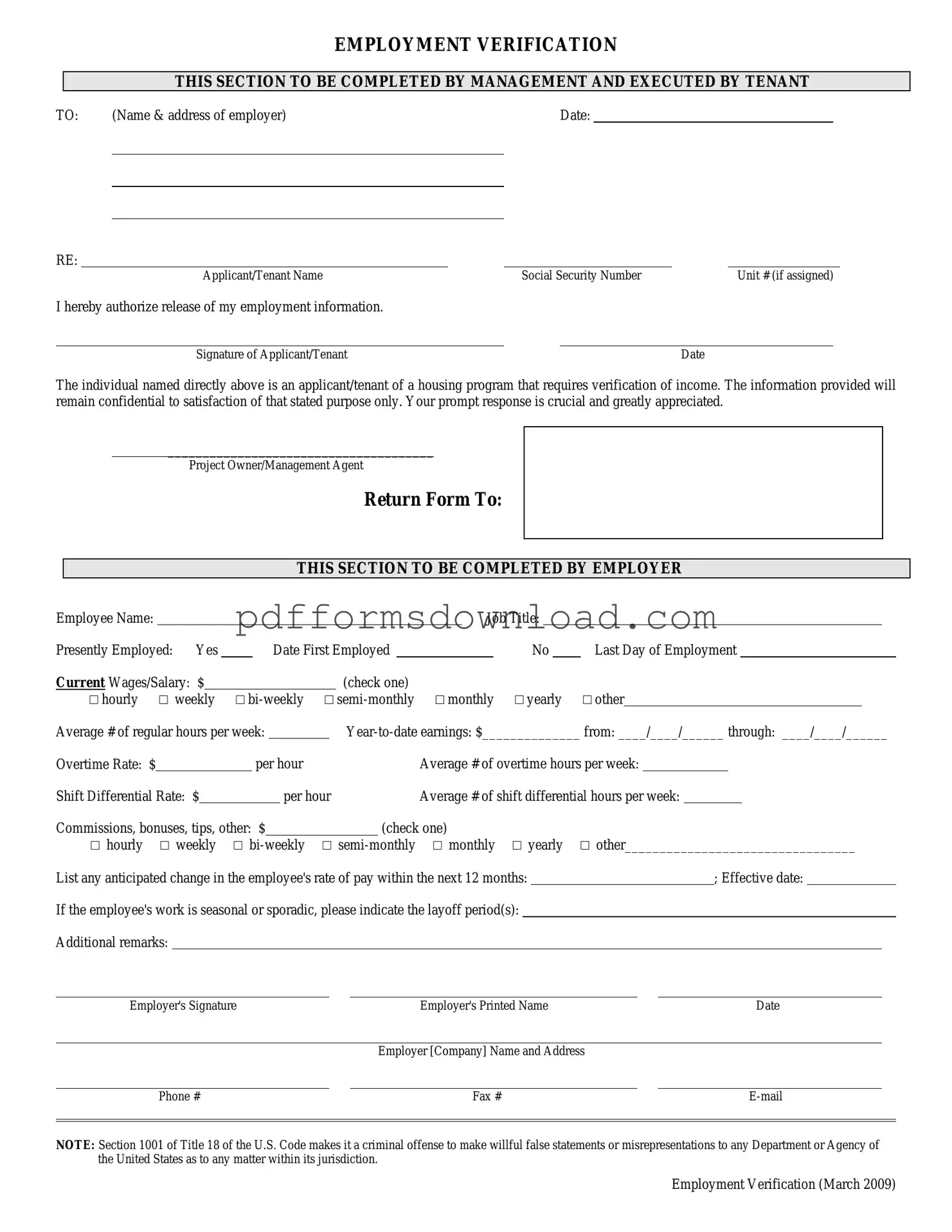What is an employment verification form?
An employment verification form is a document used by employers to confirm an employee's job status, salary, and other relevant employment details. It helps potential employers or third parties verify the information provided by a job applicant. This form typically includes the employee's name, job title, dates of employment, and salary information.
Why do I need to complete an employment verification form?
You may need to complete this form when applying for a new job, renting an apartment, or securing a loan. It provides a reliable way for others to confirm your employment history, which can be crucial for gaining trust and credibility in these situations.
Who typically requests an employment verification form?
What information is usually included in an employment verification form?
How do I fill out an employment verification form?
Can my employer refuse to complete an employment verification form?
How long does it take to get an employment verification completed?
What if there are discrepancies in the employment verification?
Is there a fee for obtaining an employment verification?
Can I request my own employment verification?
